There’s a perfectly mammoth volume to this week’s ComicList, and a lot of it looks really good. I’ll just take things as they come in alphabetical order.
 It’s a big week for Del Rey, which has revised its web site and is now seemingly impossible to navigate in terms of finding information about specific books. Let’s head over to the Random House site instead. There you can find details on the omnibus collection of the last three volumes of Mushishi, written and illustrated by Yuki Urushibara. I love this episodic series of environmental folklore stories. It’s been the subject of a Manga Moveable Feast, hosted by Ed Sizemore at Manga Worth Reading. I’m a little bit behind on Koji Kumeta’s very enjoyable satire, Sayonara, Zetsubou-Sensei, which sees its seventh volume released on Wednesday. And I was pleasantly surprised by the oh-so-formulaic-sounding Code: Breaker, written and illustrated by Akimine Kamijyo.
It’s a big week for Del Rey, which has revised its web site and is now seemingly impossible to navigate in terms of finding information about specific books. Let’s head over to the Random House site instead. There you can find details on the omnibus collection of the last three volumes of Mushishi, written and illustrated by Yuki Urushibara. I love this episodic series of environmental folklore stories. It’s been the subject of a Manga Moveable Feast, hosted by Ed Sizemore at Manga Worth Reading. I’m a little bit behind on Koji Kumeta’s very enjoyable satire, Sayonara, Zetsubou-Sensei, which sees its seventh volume released on Wednesday. And I was pleasantly surprised by the oh-so-formulaic-sounding Code: Breaker, written and illustrated by Akimine Kamijyo.
 You can call pretty much any book from Fanfare/Ponent Mon either “eagerly awaited” or “long-awaited.” Korea as Viewed by 12 Creators has been in the pipeline for years, and it’s finally due in comic shops, which is very exciting. It features “[twelve] insightful short graphic stories into the “Hermit Kingdom”, six by European and six by indigenous creators, including award winning Park Heung-yong and “Best Manga 2006” artist Vanyda.” I’m equally excited about the second volume of The Summit of the Gods, written by Baku Yumemakura and illustrated by Jiro Taniguchi. It’s about mysteries and manly mountain climbers circling around Mt. Everest, and it’s very beautifully drawn. (I know I pre-ordered both of these, yet they don’t seem to be arriving at my local comic shop, which I hope is just a function of warehouse weirdness at Diamond and not something… ahem… local.)
You can call pretty much any book from Fanfare/Ponent Mon either “eagerly awaited” or “long-awaited.” Korea as Viewed by 12 Creators has been in the pipeline for years, and it’s finally due in comic shops, which is very exciting. It features “[twelve] insightful short graphic stories into the “Hermit Kingdom”, six by European and six by indigenous creators, including award winning Park Heung-yong and “Best Manga 2006” artist Vanyda.” I’m equally excited about the second volume of The Summit of the Gods, written by Baku Yumemakura and illustrated by Jiro Taniguchi. It’s about mysteries and manly mountain climbers circling around Mt. Everest, and it’s very beautifully drawn. (I know I pre-ordered both of these, yet they don’t seem to be arriving at my local comic shop, which I hope is just a function of warehouse weirdness at Diamond and not something… ahem… local.)
I’m surprised by how much I’m liking Marvel’s Secret Avengers, written by Ed Brubaker and illustrated by Mike Deodato. It’s always nice to see super-heroes behaving like well-intentioned professionals, and this may be the first time that the “proactive super-team” concept has actually worked. I’m not entirely sold on Deodato’s mildly cheesecake-y art, and Valkyrie’s braids are completely insane, but it’s a minor quibble.
Comics by Osamu Tezuka are always a welcome pleasure, and that certainly includes his episodic medical melodrama, Black Jack, about a mercenary surgeon dealing with more bizarre maladies than House could ever have imagined. The 12th volume arrives Wednesday.
 Viz offers quite the mixture of titles from along the quality spectrum, so I’ll focus on the good and/or promising. Personal highlights include the 20th volume of Hikaru no Go, written by Yumi Hotta and illustrated by Takeshi Obata, and the fifth volume of Kimi ni Todoke: From Me to You, written and illustrated by Karuho Shiina. On the confirmed debut front is Bakuman, written by Tsugumi Ohba and illustrated by the aforementioned Obata. This one’s by the creators of Death Note, which is still selling tons of copies ages after the series concluded. That series was about using a notebook to rule the world. This one’s about using a sketch pad to make lots of money: “verage student Moritaka Mashiro enjoys drawing for fun. When his classmate and aspiring writer Akito Takagi discovers his talent, he begs Moritaka to team up with him as a manga-creating duo. But what exactly does it take to make it in the manga-publishing world?” If anyone should know, it’s these two.
Viz offers quite the mixture of titles from along the quality spectrum, so I’ll focus on the good and/or promising. Personal highlights include the 20th volume of Hikaru no Go, written by Yumi Hotta and illustrated by Takeshi Obata, and the fifth volume of Kimi ni Todoke: From Me to You, written and illustrated by Karuho Shiina. On the confirmed debut front is Bakuman, written by Tsugumi Ohba and illustrated by the aforementioned Obata. This one’s by the creators of Death Note, which is still selling tons of copies ages after the series concluded. That series was about using a notebook to rule the world. This one’s about using a sketch pad to make lots of money: “verage student Moritaka Mashiro enjoys drawing for fun. When his classmate and aspiring writer Akito Takagi discovers his talent, he begs Moritaka to team up with him as a manga-creating duo. But what exactly does it take to make it in the manga-publishing world?” If anyone should know, it’s these two.
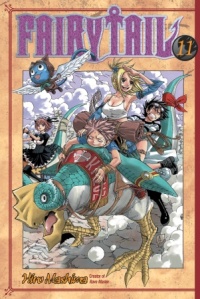

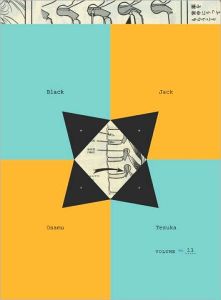

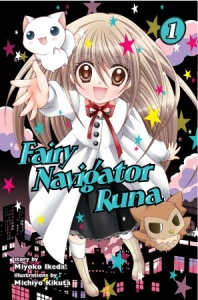








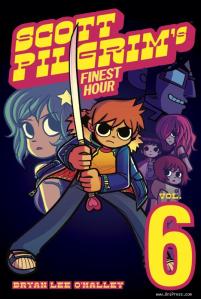


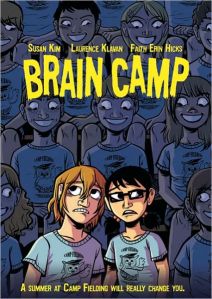




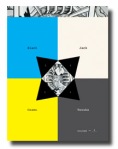

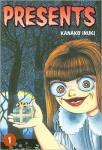

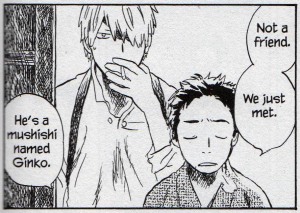









Misjudging books by their cover blurbs
I’ve got to tell you that this kind of thing – a person falling madly in love with someone they don’t know anything about based on a brief, largely forgotten encounter during their formative years – gets on my nerves. I can get over it, as I did with Kitchen Princess (Del Rey), but the first volume of Library Wars doesn’t fill me with confidence. Kasahara isn’t very bright, and she doesn’t work very hard at her training. I’m inclined to side with her bright, hard-working rival when he suggests that she doesn’t really deserve the preferential treatment and opportunities for advancement she receives. (She hasn’t even bothered to learn the shelving system!)
Maybe future volumes will focus less on dumb mooning and more on information specialists promoting the free exchange of information and ideas by any means necessary. I’ll give Library Wars another volume, but Kasahara needs to get her dopey act together. Good intentions only go so far.
(Library Wars: Love and War was based on a novel by Hiro Arikawa and adapted by Kiiro Yumi.)
One of the things that matter, at least in Sakura’s considered opinion, is an apparent mass murder that she witnesses while riding the bus home from school. She goes to investigate, but there’s no evidence. When a new boy, Rei, shows up in class, she recognizes him from the massacre and looks into the mystery, putting herself in danger in the process.
Sakura’s tough, principled approach to life pretty much carries the book. She never cringes, and she has a really firm grasp on right and wrong. Rei’s vigilantism offends her notions of order and justice, and I’m looking forward to seeing their philosophical back-and-forth. Code:Breaker could become as bland as its premise suggests, as much more promising manga has gone off the rails by the second volume, but I think I’ll enjoy this one as long as Sakura’s spine endures.
(Code:Breakers was written and illustrated by Akimine Kamijyo and debuts from Del Rey in late July. These remarks are based on a review copy.)